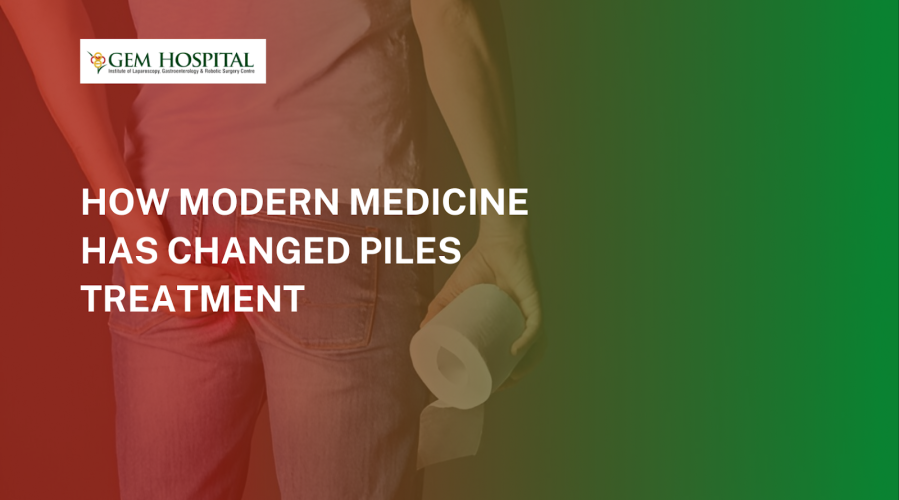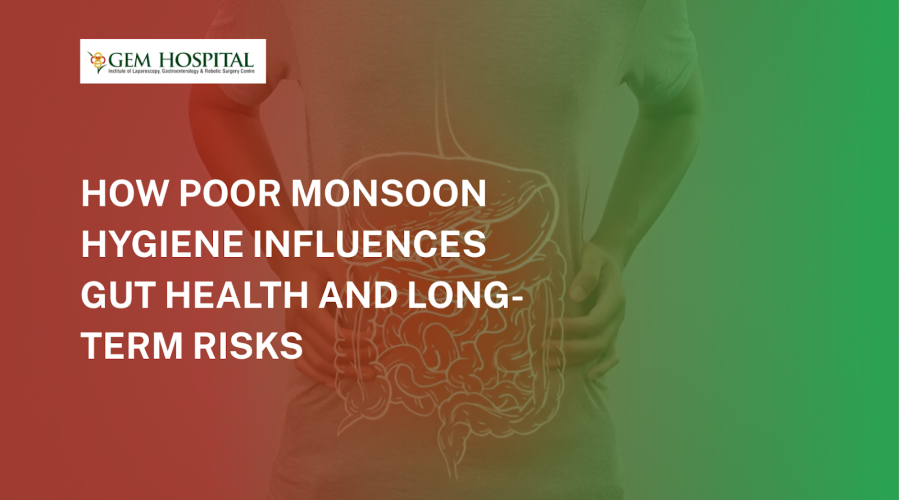Learn why street foods can increase the risk of esophageal and gastric issues. Understand contamination, hygiene lapses, and safety tips to protect your digestive health.
How Modern Medicine Has Changed Piles Treatment

For many years, piles (hemorrhoids) were viewed as a painful, embarrassing diagnosis that many patients were reluctant to talk about openly. Traditional treatments relied heavily on home remedies, surgical treatments that are extremely painful with lengthy recovery, and weariness about the possible diagnosis. Now, with advanced health care practice of today, Modern Piles Treatment changes everything. An exciting and brand new way for both doctors and patients to perceive piles as faster, safer, and less painful than before.
Understanding Piles and Their Impact
Piles are swollen blood vessels that can develop in the rectal or anal regions that can cause discomfort, bleeding, pain and itching. Piles can be internally or externally classified depending on their positioning. Causes of piles can be attributed to lifestyle practices that include sedentary nature, chronic constipation, not enough fiber populated diets, and simply by sitting for extended periods of time.
Patients previously have been concerned of painful surgical treatments, more worrying was the time it would take to recover from surgery. Most patients instead opted to patch their suffering using ointments, dietary changes, and temporary reliefs to get through an acute suffering period rather than seek something more permanent. The nature of developments in medicine have provided innovations to treatments, especially with minimally invasive procedures have made everyone's perception of piles treatment more patients-friendly.
The Shift to Non-Invasive and Minimally Invasive Procedures
The most significant shift in the management of piles is the momentous shift that departure from the surgical removal of piles - to that of minimally invasive treatment processes. A few common examples that a patient could consider include:
- Laser Treatments
Laser treatment is possibly the most popular of the Modern Piles Treatment set up, it is based on using energy that is concentrated to shrink or seal off blood vessels. It is relatively painless, it minimizes bleeding, and patients can recover quicker.Patients can return back to regular activity as soon as 1 or 2 days after surgery.
- Stapler Hemorrhoidopexy
An innovative approach for prolapsed hemorrhoids. The surgeon uses a circular stapler device to reposition the hemorrhoidal tissue and concurrently cut off the blood supply. Patients typically experience less pain and more expedient return to their day-to-day living than with procedures involving cutting and stitching the tissue.
- Doppler-Guided Hemorrhoidal Artery Ligation (DGHAL)
With a special Doppler probe, the blood vessels supplying the hemorrhoid can be identified and are then tied off to allow the things to swell down. This means it is an accurate, quicker, and causes less complications than other surgical alternatives, and reports are seeing reduced recurrence.
These new treatment options for piles have been less daunting and much more tolerable for those who had previously delayed treatment due to pain and fear of surgery options.
Improved Diagnosis and Patient Care
Another way that modern medicine has changed considerations for treating piles is through diagnosis and care of the patient. Not that long ago piles could only be diagnosed with the symptoms and often times mistakes could happen, and rectal conditions other than piles were confused with piles. And so, diagnostic procedures such as high definition proctoscopy and/or colonoscopy had obstacles to overcome, but eventually, doctors were able to confirm piles and rule out more sinister conditions such as colorectal cancer.
Shorter Recovery, Better Outcomes
Traditional surgery for piles may have been a trip to hospital under general anesthesia/sleep - and several weeks of varying recovery with pain. Modern methods have dramatically reduced recovery time. Examples of some of the recent progress in piles treatment:
- Laser treatments performed under local anesthesia only.
- Many patients are allowed to go home the same day.
- Pain relief is much better thanks to new medications.
- Reduction in recurrence or infection is better due to technique.
These advances have enabled working professionals, elderly patients, and even those with existing illnesses to receive treatment without undue disruption to their life.
Breaking the Stigma
Besides the above points, one of the biggest advances in Modern Piles Treatment has been a changing stigma of piles. With more awareness initiatives, patient education pieces, and a no-pain treatment process, many more patients are accessing timely help. If patients can seek treatment for their symptoms in a timely manner and receive treatment, complications like chronic anemia, bleeding episodes, and rectal prolapse, can be avoided by managing the symptoms without further complications.
The Future of Piles Care
Moving forward, treatment for piles will continue to change as robots take over surgical procedures, AI helps us with patient diagnosis, and maybe even regenerative medicine. The hope is that better, more precise, minimal invasive procedures, can serve the local patient in rural and small town locations where no services currently exist.
The change embraced by institutions offering gastrointestinal and colorectal care is embracing innovation while delivering compassionate patient care. Patients do not have to die a little every day in silence or live with piles anymore; they have world-leading treatment options implemented focusing on patient comfort objectives and the mainland objectives for every patient.
Piles treatment is not tied to extended painful and debilitating treatment inside hospital locations. Patients only need to look at the technology, new minimally invasive treatment equipment, and then realize what additional options will be available through - exploring patient pathways while collaborating with healthcare institutions. If you, or someone you know and care about, have symptoms, go and seek help NOW ! You have the trust and experience of Gem Hospital in advanced gastrointestinal care. Take the first step towards relief and comfort Book an Appointment, today.
Blogs & Article
Learn how to protect your colon during the monsoon by avoiding contaminated food and water. Get essential hygiene, diet, and safety tips to prevent infections.
Discover how poor monsoon hygiene increases gut infections, weakens digestion, and leads to long-term health risks. Learn prevention tips for a healthier monsoon.


